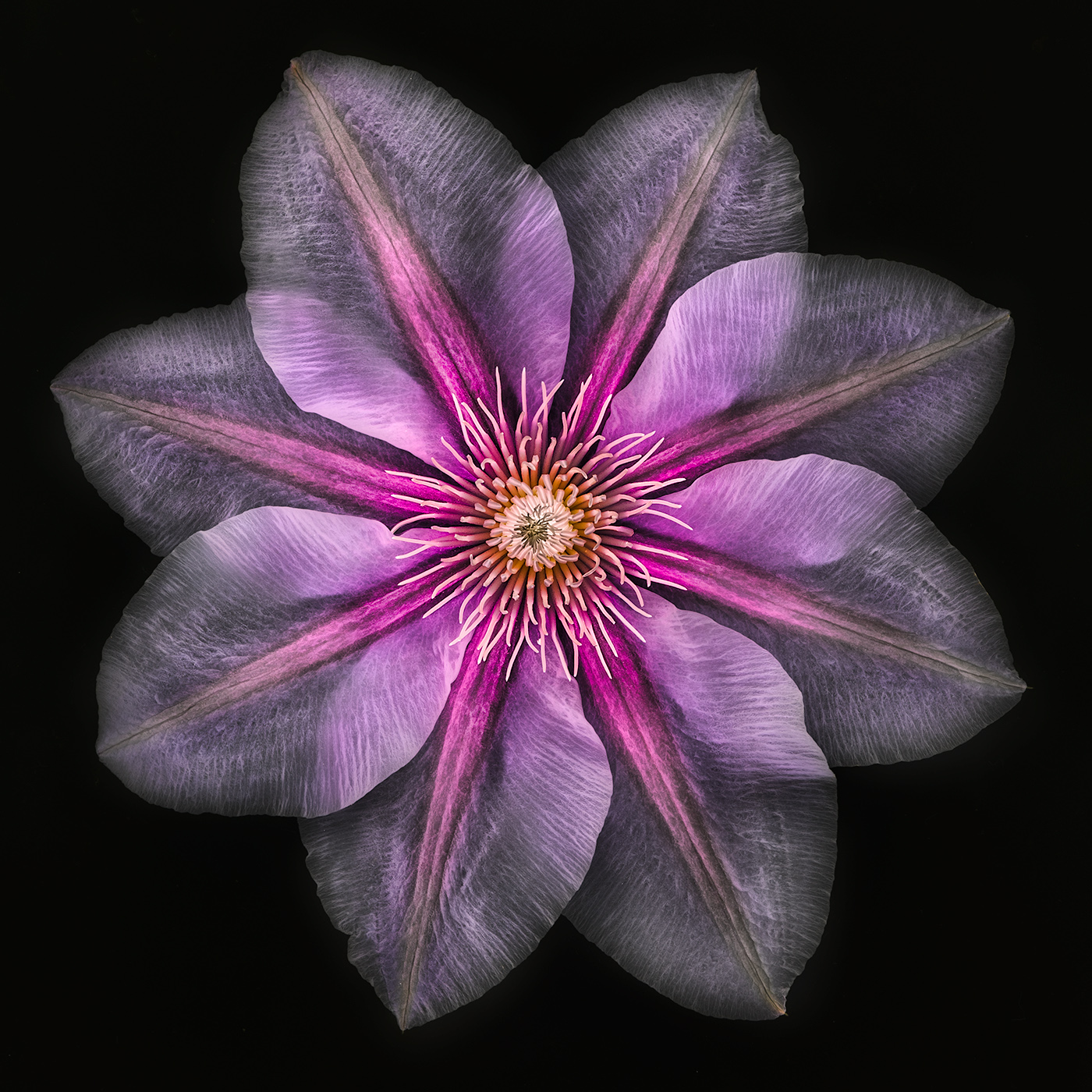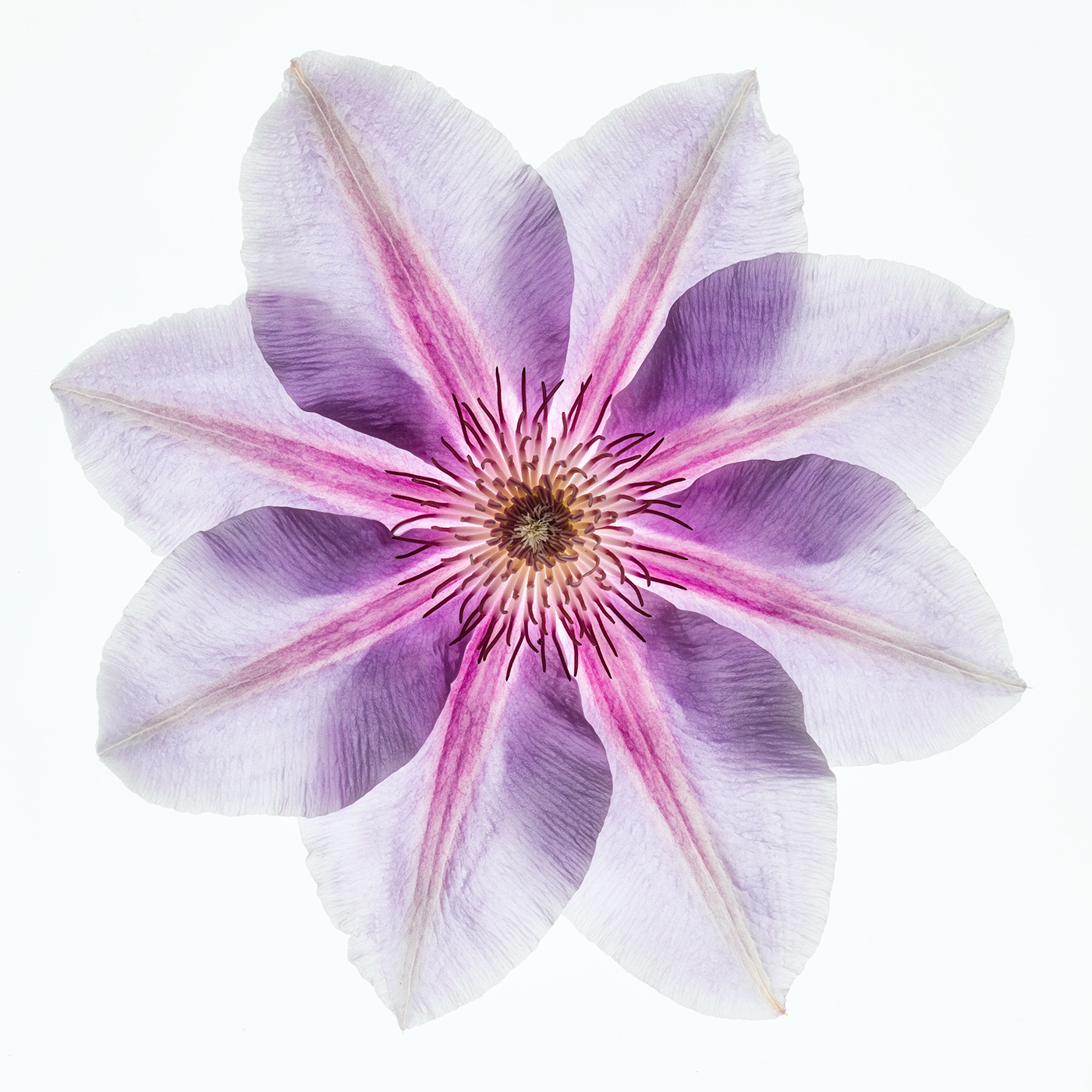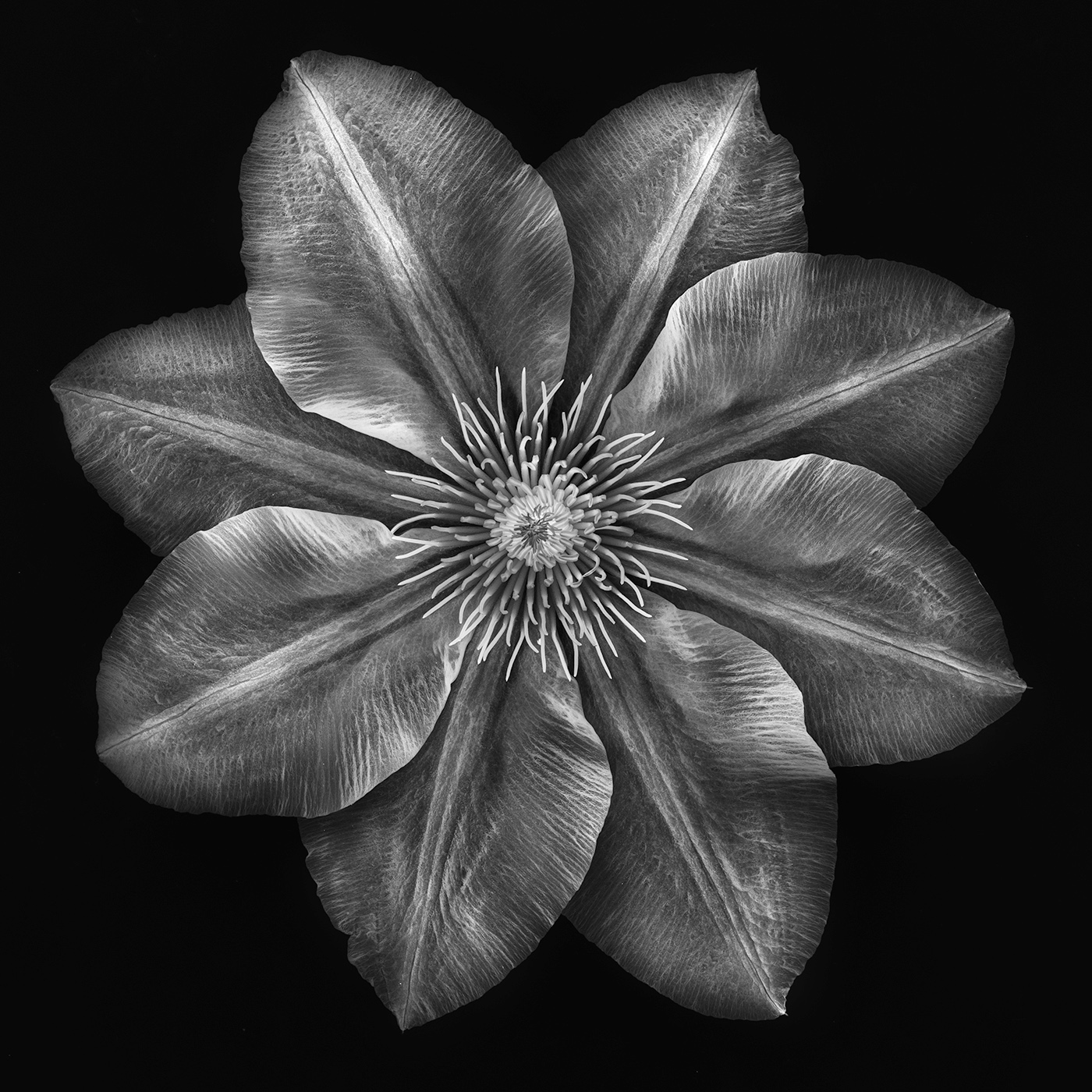To photograph this Clematis Bee’s Jubilee blossom, I placed it on a light box and photographed it straight down using a tripod with a Nikon D810 and my special Zeiss Otus 55mm f1.4 lens. The settings were 1/4 of a second at f/16 and ISO 64 (middle image). The top image is an LAB inversion of the L-channel, and the bottom version is simulated infrared (IR), via Nik Color Efex Pro.



There seems to be some controversy about where to apostrophate (where to place the possessive apostrophe) in Clematis Bee’s Jubilee. Well-known horticultural nursery White Flower Farm does it Bees’ Jubilee, which of course implies that this flower is the jubilee of multitudinous bees or of someone named Mr. Bees. However, the plural apostrophization may be incorrect, as this striking flowering Clematis seems to be named after the botanist Rupert Bee (spelled without a trailing ‘s’) of Colchester in the United Kingdom, who first introduced this cultivar in the 1950s.
Related story: We are not afraid of color.
Pingback: Miraculum Flores
Pingback: Essays in Translucency
Pingback: Mallow
David Hollombe
29 May 2015There is no ‘Rupert Bee.’
According to Julia Brittain’s ‘Plant Lover’s Companion’, the nursery ‘Bees, Ltd.’ was originally called ‘A. Bee & Co.’ from the initials of the company’s founder, Arthur Bulley. As the name was changed before 1911 and the variety was introduced about 1950, “Bees'” is probably the correct spelling.
Pingback: Clematis in Love
Pingback: Harold Davis—Best of 2022